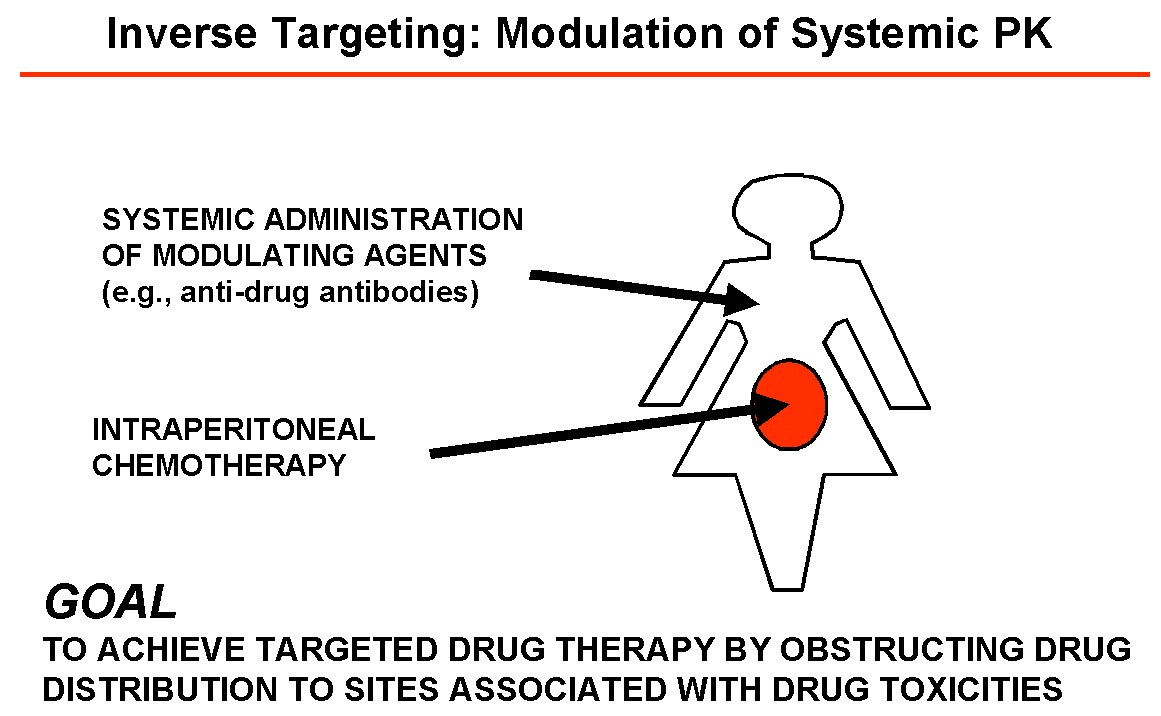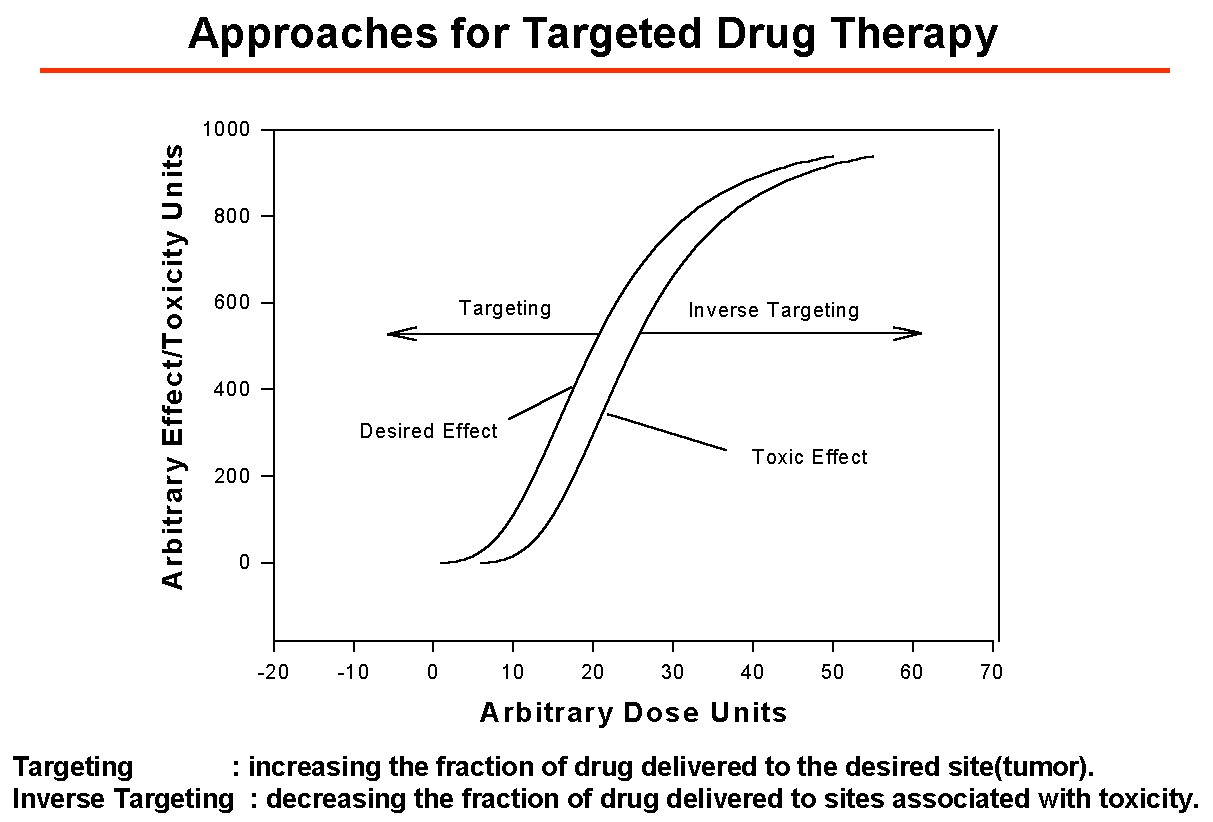|
Inverse Targeting Project
Our
laboratory is interested in the optimization of intraperitoneal chemotherapy
through the use of adjuvant agents that impart regio-selective alterations in
pharmacokinetics and pharmacodynamics.1-5
It is plausible that the therapeutic selectivity of ip chemotherapy
might be improved by strategies that enhance pharmacokinetic selectivity (i.e.,
improving the ratio of drug exposure in peritoneal tumors relative to that of
systemic tissues) or by approaches that enhance pharmacodynamic selectivity
(i.e., enhancing chemotherapeutic potency in peritoneal tumors and/or decreasing
chemotherapeutic potency in systemic tissues).1
We have proposed a drug targeting strategy to enhance the
pharmacokinetic selectivity of IP chemotherapy, where adjuvant agents are
employed to alter systemic drug disposition, minimizing systemic exposure to
drug, and reducing the systemic toxicity of ip chemotherapy.3-5 We consider this to be an “inverse targeting strategy” in that the
intent is to decrease the efficiency of drug delivery to sites associated with
drug toxicities (i.e. as opposed to “traditional” targeting strategies,
which attempt to increase the efficiency of delivery to sites associated with
desired effects).4
We believe that this targeting strategy will lead to dramatic improvements in
the safety and efficacy of the chemotherapy of peritoneal metastases of ovarian
and colorectal cancers.
Funding for this project has
been provided by the National Cancer Institute (CA118213).
Links to selected
publications/abstracts:
Preliminary studies with digoxin; development of
polyclonal anti-methotrexate antibodies;
inverse targeting for improved pharmacokinetic selectivity of ip
chemotherapy with methotrexate; inverse targeting &
agonist-like effects of anti-drug antibodies;
antibody PKPD


References:
1. Balthasar
JP and Fung HL 1996. Pharmacokinetic and pharmacodynamic optimization of
intraperitoneal chemotherapy. Life Sciences 58:535-543.
2. Balthasar
J and Fung HL 1994. Utilization of antidrug antibody fragments for the
optimization of intraperitoneal drug therapy: studies using digoxin as a model
drug. Journal of Pharmacology & Experimental Therapeutics 268:734-9.
3. Balthasar
JP and Fung HL 1995. High-affinity rabbit antibodies directed against
methotrexate: production, purification, characterization, and pharmacokinetics
in the rat. Journal of Pharmaceutical Sciences 84:2-6.
4. Balthasar
JP and Fung HL 1996. Inverse targeting of peritoneal tumors: selective
alteration of the disposition of methotrexate through the use of
anti-methotrexate antibodies and antibody fragments. J Pharm Sci 85:1035-43.
5. Lobo ED, Soda DM and
Balthasar JP 2003. Application of pharmacokinetic - pharmacodynamic modeling to
predict the kinetic and dynamic effects of anti-methotrexate antibodies in mice.
Journal of Pharmaceutical Sciences 92:1665-1676.
|